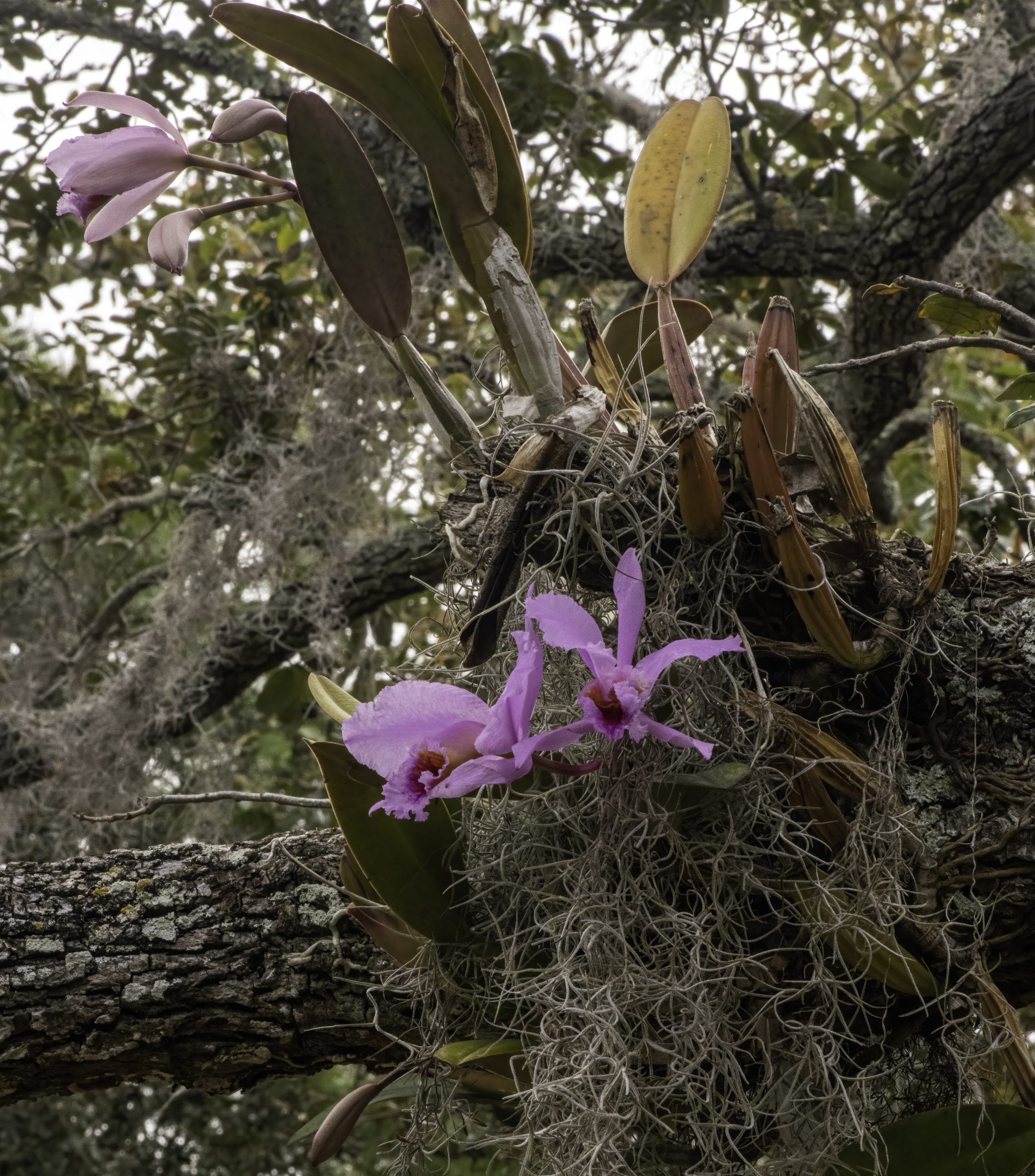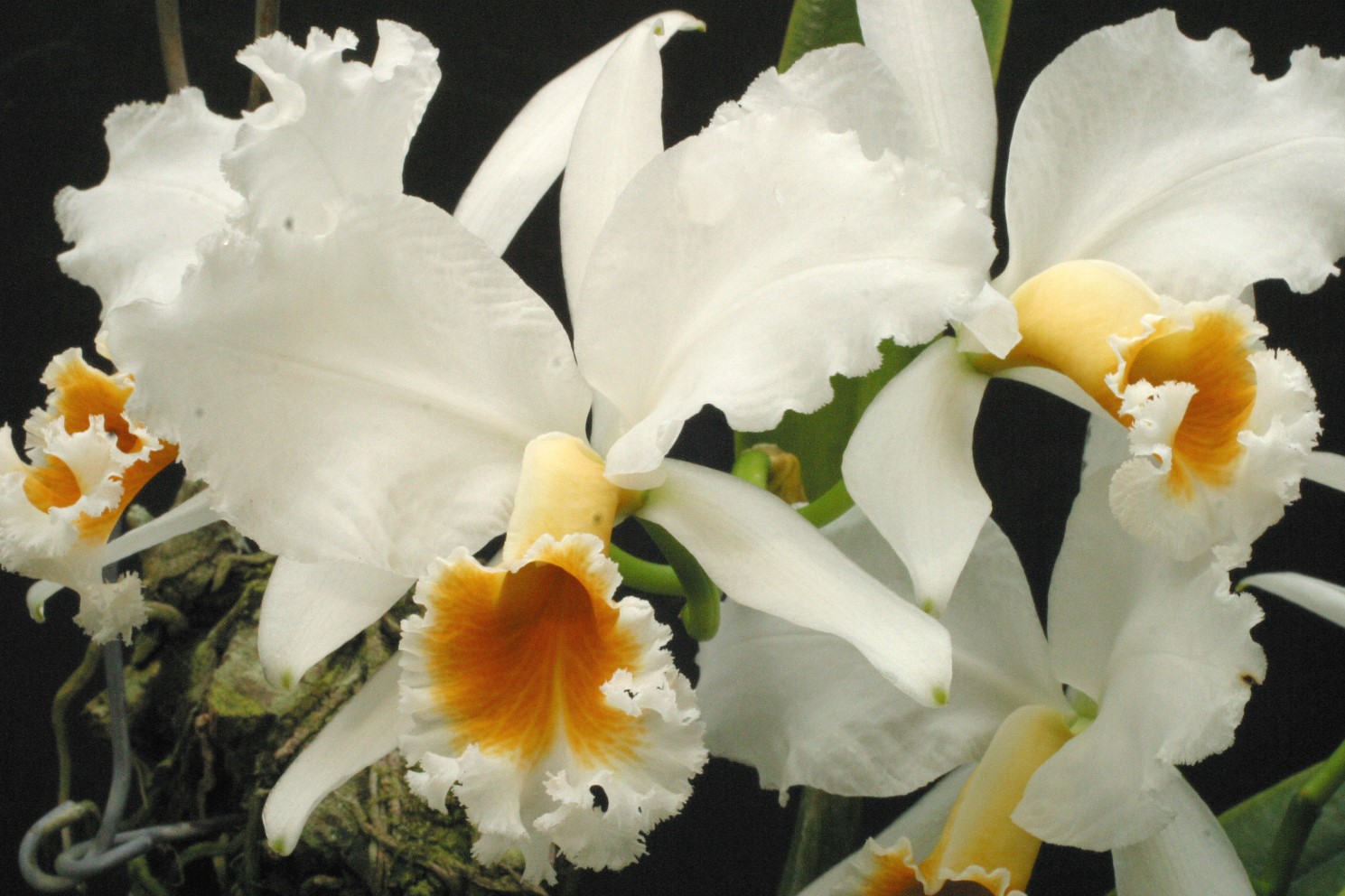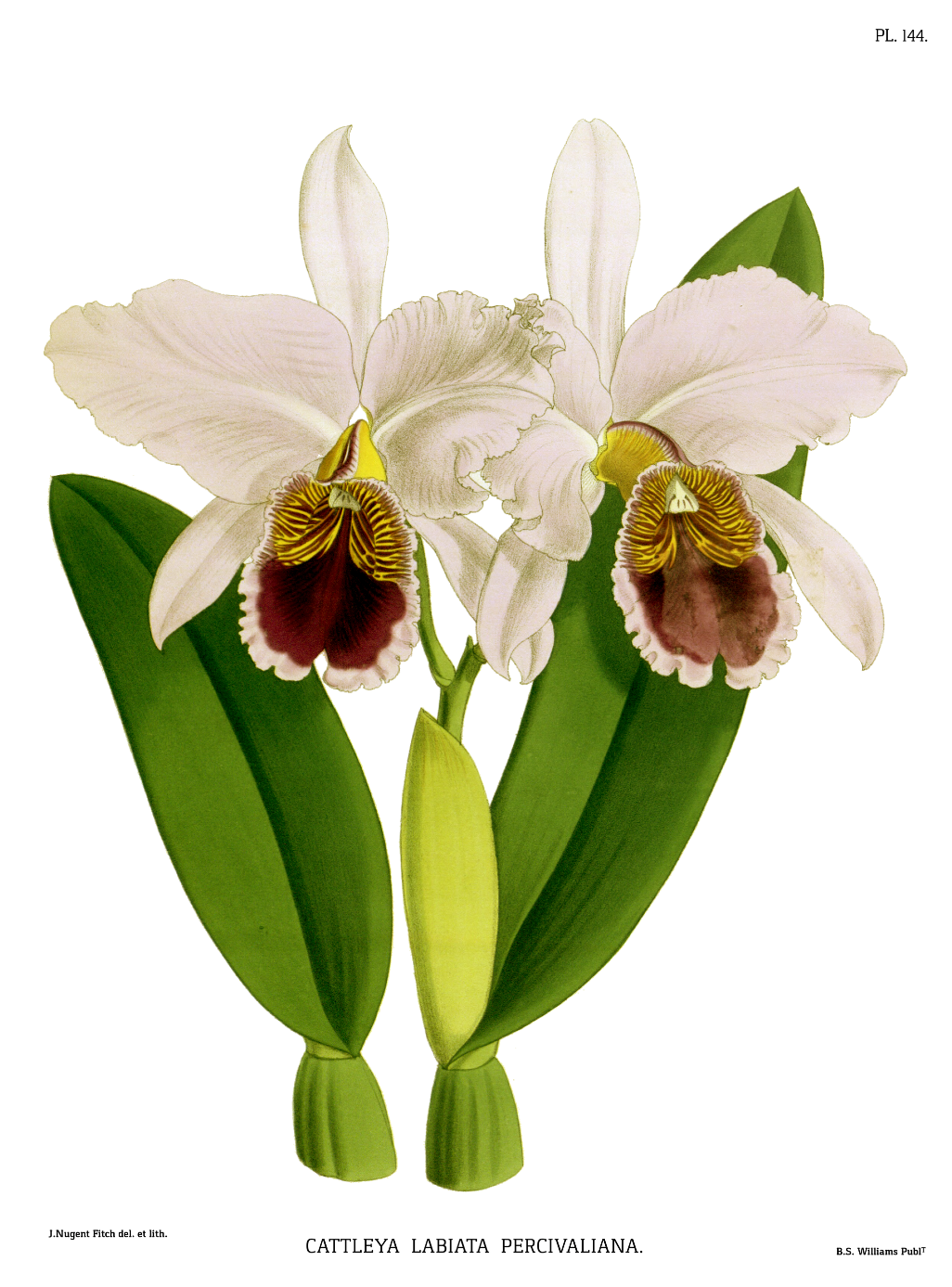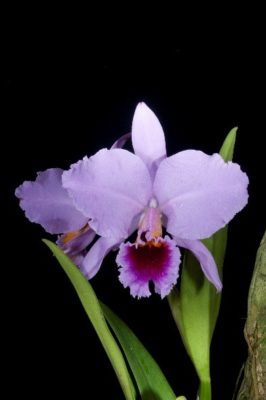
Cattleya percivaliana blooming in Wedding Oak at downtown campus (Photo by Aaron Fink)
Blooming now in the “Wedding Oak” just west of the Payne Mansion at Selby’s downtown campus is a beautiful lavender-colored orchid with large flowers that is often underlooked by visitors more interested in the fauna of the brackish water lagoon below. The orchid is Cattleya percivaliana, also called the “Christmas orchid” for the time of year it typically blooms in cultivation north of the Tropic of Cancer.
This lovely orchid is endemic to Trujillo state, a very small region above Lago de Maracaibo in the Venezuelan Andes, where it can be found growing at altitudes between 1400 and 2000 meters. In fact, its small natural range is the result of the greater height of the surrounding mountains, since this species does not seem to be able to grow at altitudes above 2000 meters, limiting its ability to expand its range. In its natural habitat, C. percivaliana can be found growing on trees (epiphytic) or with other small plants on rocks (lithophytic), often in full sun. Despite its reputation for winter blooms, it can be found blooming at any time of the year in the wild, though more often from August through November.
C. percivaliana was first discovered in 1881 by William Arnold, a Victorian orchid hunter, and raised from varietal to species status by British horticulturist James O’Brien in 1883. It had been previously classified by botanist Heinrich Gustav Reichenbach as a variety of the more widespread Cattleya labiata which he named C. labiata var. percivaliana (Fig.1) in honor of a Mr. R.P. Percival of Birkdale in Southport, England, an avid orchid hobbyist at a time when orchids were more costly than gold. Mr. Percival took his namesake orchid under his wing, procuring superior clones for exhibition at flower shows and thus raising the profile of this underrated and newly discovered species in an orchid fancier’s world where larger, showier (and more finicky) species were considered superior.
Despite its sub-montane origins, C. percivaliana has proven very adaptable in cultivation and can be easily grown both at sea level as well as in Florida’s torrid heat. Its compact size (as the smallest of the unifoliate Cattleyas), ease of care, symmetrical flower form, and the unique purple/orange color of its lip make this a highly desirable species to orchid hobbyists. The flowers are so perfect in form that they appear fake. These very traits have made it an important contributor in the creation of new hybrids, and C. percivaliana has been used as a parent in new crosses more than 130 times by orchid growers. Several superior clones and grexes of the species exist, including the AOS awarded ‘Summit’ a compact lavender form of the species with large flowers and a richly colored lip as well as ‘Velazquez’ (Fig. 2) and ‘Sonia de Urbano’ both white (‘alba’) forms with a rich golden lip. Next year, you may want to ask Santa Claus to bring you a potted Cattleya percivaliana in all its spectacular winter bloom for the holidays.

Figure 2. Cattleya percivaliana ‘Velazquez’ in Selby’s greenhouse collection (Photo by Phil Nelson)

Figure 1. Cattleya labiata var. percivaliana (plate by John Nugent Fitch, 1884)

By Shawn McCourt on January 7, 2021
Inset photo of lavender Cattleya percivaliana bloom by Wade Collier
Further Reading:
https://chadwickorchids.com/content/cattleya-percivaliana
https://www.aos.org/orchids/collectors-items/cattleya-percivaliana.aspx
https://travaldo.blogspot.com/2018/05/cattleya-percivaliana-orchid-plant-care-and-culture.html
http://delfinadearaujo.com/on/on32/pages/catvenezueng.htm
https://www.gutenberg.org/files/59411/59411-h/59411-h.htm#fig144
References:
Warner, R., B.S. Williams and T. Moore. (1884). Orchid album: comprising coloured figures and descriptions of new, rare and beautiful orchidaceous plants. Illustrated by John Nugent Fitch. Vol. 3: Plate 144.
